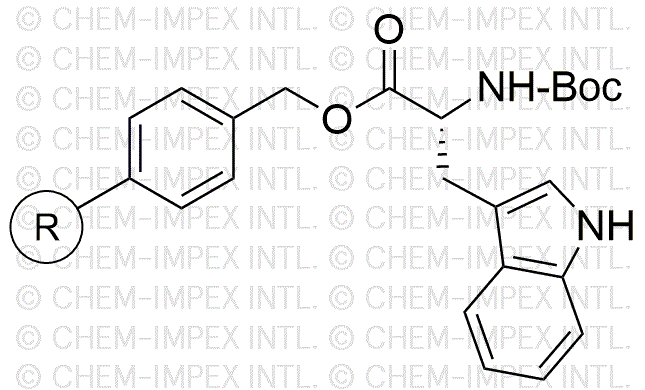Na-Boc-D-tryptophan Merrifield is widely utilized in research focused on:
- Peptide Synthesis: This compound serves as a key building block in the solid-phase peptide synthesis process, allowing researchers to create complex peptides efficiently.
- Drug Development: Its role in synthesizing bioactive peptides makes it valuable in pharmaceutical research, particularly in developing new therapeutics targeting various diseases.
- Biotechnology: Used in the production of recombinant proteins, it aids in the development of biologics, enhancing the efficacy of vaccines and therapeutic proteins.
- Neuroscience Research: As a tryptophan derivative, it is essential in studying neurotransmitter pathways, contributing to advancements in understanding mood disorders and neuropharmacology.
- Food Industry: It can be used in flavoring agents and nutritional supplements, leveraging its properties to enhance the sensory profile of food products.
General Information
Properties
Safety and Regulations
Applications
Na-Boc-D-tryptophan Merrifield is widely utilized in research focused on:
- Peptide Synthesis: This compound serves as a key building block in the solid-phase peptide synthesis process, allowing researchers to create complex peptides efficiently.
- Drug Development: Its role in synthesizing bioactive peptides makes it valuable in pharmaceutical research, particularly in developing new therapeutics targeting various diseases.
- Biotechnology: Used in the production of recombinant proteins, it aids in the development of biologics, enhancing the efficacy of vaccines and therapeutic proteins.
- Neuroscience Research: As a tryptophan derivative, it is essential in studying neurotransmitter pathways, contributing to advancements in understanding mood disorders and neuropharmacology.
- Food Industry: It can be used in flavoring agents and nutritional supplements, leveraging its properties to enhance the sensory profile of food products.
Documents
Safety Data Sheets (SDS)
The SDS provides comprehensive safety information on handling, storage, and disposal of the product.
Product Specification (PS)
The PS provides a comprehensive breakdown of the product’s properties, including chemical composition, physical state, purity, and storage requirements. It also details acceptable quality ranges and the product's intended applications.
Certificates of Analysis (COA)
Search for Certificates of Analysis (COA) by entering the products Lot Number. Lot and Batch Numbers can be found on a product’s label following the words ‘Lot’ or ‘Batch’.
Número de catálogo
Número de lote/lote
Certificates Of Origin (COO)
This COO confirms the country where the product was manufactured, and also details the materials and components used in it and whether it is derived from natural, synthetic, or other specific sources. This certificate may be required for customs, trade, and regulatory compliance.
Número de catálogo
Número de lote/lote
Safety Data Sheets (SDS)
The SDS provides comprehensive safety information on handling, storage, and disposal of the product.
DownloadProduct Specification (PS)
The PS provides a comprehensive breakdown of the product’s properties, including chemical composition, physical state, purity, and storage requirements. It also details acceptable quality ranges and the product's intended applications.
DownloadCertificates of Analysis (COA)
Search for Certificates of Analysis (COA) by entering the products Lot Number. Lot and Batch Numbers can be found on a product’s label following the words ‘Lot’ or ‘Batch’.
Número de catálogo
Número de lote/lote
Certificates Of Origin (COO)
This COO confirms the country where the product was manufactured, and also details the materials and components used in it and whether it is derived from natural, synthetic, or other specific sources. This certificate may be required for customs, trade, and regulatory compliance.


